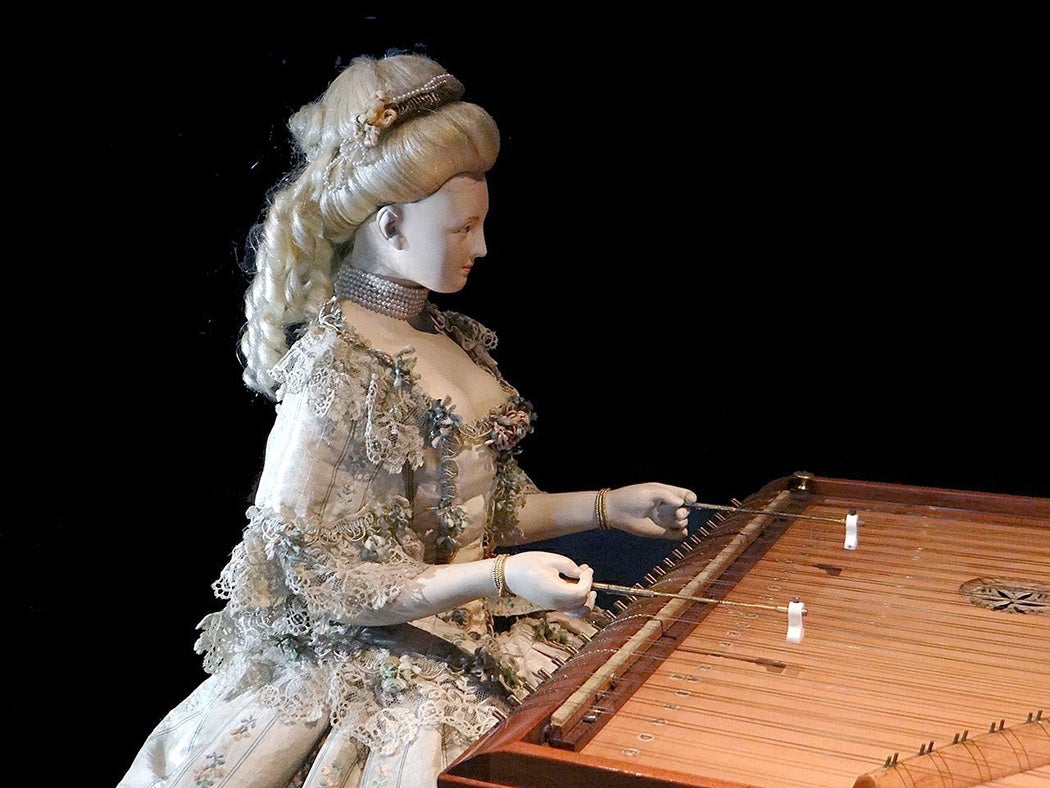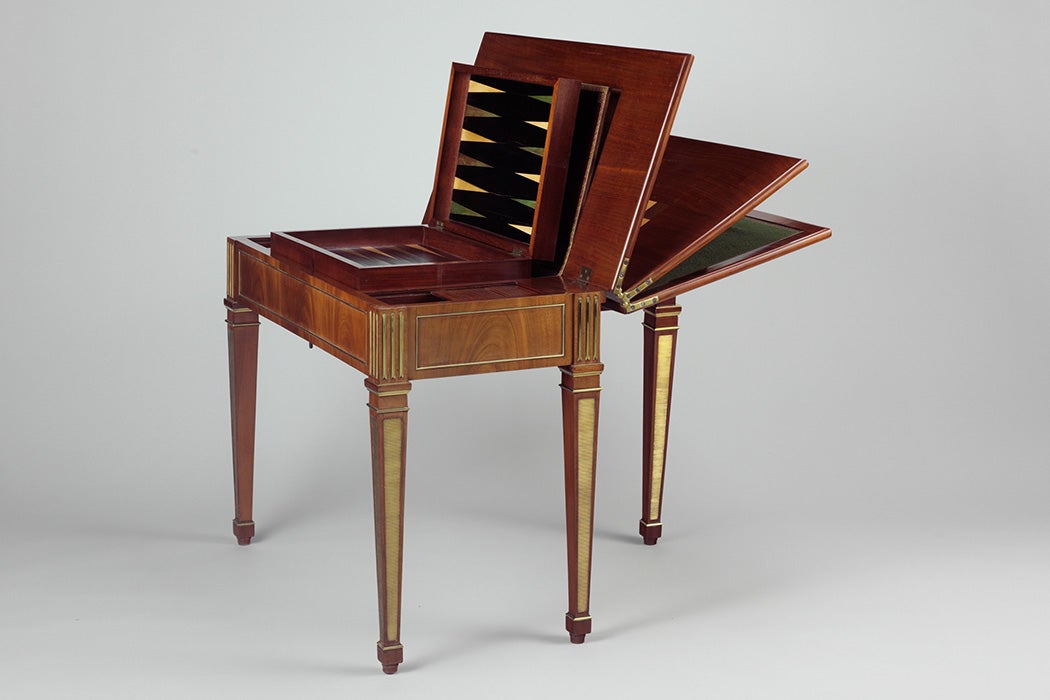When Goethe wanted to help his readers imagine a fairy palace, he asked them to think about the furniture of David Roentgen (1743–1807). Cabinetmaker to Marie Antoinette, Roentgen was famous for creating bureaus and desks so riddled with secret cubby-holes that simply opening them all became a kind of magic show.
Take the secretary desk he made for King Frederick William II of Prussia. There’s one big keyhole right on the front, but you need to be in the know to slide an inconspicuous piece of trim aside and reveal the second, secret keyhole. If you turn the key in one direction, a set of drawers on the left-hand side of the desk flies forward and swerves to the side, revealing a second set of drawers beneath; twist the key the other direction, and the right-hand set of drawers does its magic.
That’s just the start of the performance. At the push of a button, a central panel glides back, and raises a tiny set of drawers in its place, like a miniature elevator; here and there, the ornate copper trim hides secret buttons that make the drawers fly open. Illustrated panels—figures of actors—slide away to reveal hidden shelves, and a nook in the center of the piece looks like a miniature room, complete with inlaid wood fashioned to look like tiny chairs, picture-frames, and wallpaper. In the final act, the turn of a key makes a huge wooden easel pop out of the front and unfurl with a robotic, ungainly ka-chunk.
It verges on absurdity—who could need so many hiding places, and who could remember all the possible ways to open them?—but Roentgen was seeking to impress. He needed to, because it was a gamble; he wasn’t actually commissioned to make this desk. He hoped it would impress his royal audience so much that they would reward him for something they never requested. In this case, his gamble paid off.

You could never accuse Roentgen of taking half-measures. For Charles of Lorraine, he made a tour-de-force in marquetry—delicately-shaded wood inlays crafted to look almost like paintings—so large that the Jülich city gate had to be partially deconstructed in order to carry it through. In 1785, he again bet on himself and surprised Marie Antoinette with a clockwork tympanum (hammered dulcimer) player, dressed in up-to-the-minute fashions and bearing a strong resemblance to the queen herself. The 18-inch doll and her miniature instrument were perched on top of a characteristically Roentgen desk. A massive clockwork wheel was hidden in the desk, and as it started to spin, the doll came to life. Glancing at her audience, her eyes swiveled in her frozen face under her towering pouf of white-blond hair, and then she raised the hammers in her hands and began to play.
Unlike many automata of this type, the doll made the music; the sound issued when her hammers hit the strings and not from a music box. And although Roentgen was handsomely paid for the automaton, art historian Wolfram Koeppe speculates that the Queen was unsettled by her clockwork lookalike as she gave it away to the Academy of Sciences only a few months later.
Who was Roentgen, the man who made this fairy-tale furniture? Considering the playfulness of the inventions, his background was curiously austere. His father was Abraham Roentgen, a cabinetmaker and expert in marquetry who settled in a Moravian community on the banks of the Rhine. Son David was thus raised in the Moravian faith, which centered around worship—with daily prayer meetings at minimum; sometimes several meetings happened a day—and everyone in the community was subject to intense scrutiny over anything that could stand in the way of their spiritual development.
The younger Roentgen’s flashy clients and massive expenditures were a major source of suspicion in the tight-knit community. As Lindsay Boynton details, the Moravians prized fine craftsmanship, which partly explains how he developed his skills, but canny negotiation was “almost immoral by Moravian standards, which decreed bargaining or reducing prices to be anathema,” writes historian Michel N. Benisovich. Roentgen, it seems, was perpetually on the verge of being kicked out.
Weekly Newsletter
For all his worldly success, the rejection of his community seems to have stung Roentgen deeply. When the French Revolution came, it dispensed with his most reliable patrons in spectacular fashion. He spent years afterward struggling to unload his unsold wares at (relatively) cut-rate prices and was forced to make a risky trek to Paris to try and convince the estates of his former clients (now mostly on the lam) to pay their outstanding bills. But at the same time, perhaps in relation to his struggles or perhaps not, his Moravian community softened towards him.
When he had to flee the advancing French Revolutionary armies, Moravian dissenter communities sheltered him. In a letter written at that time, he expressed that all his worldly goods weighed heavily on him. “There is still a heavy burden on my shoulders,” he wrote, “namely—my houses, many unnecessary furnishings, factories, machines, tools, and other such equipment, all of which I no longer need. I now have a wholly different perspective.”
Perhaps it was just that attitude that allowed him to rejoin the Moravian community on the Rhine, where he lived out his life not in austerity, but in comfort provided by the wealth he’d accumulated as a cabinetmaker of the most extravagant kind.







